Apple Ginger Jelly
This small batch of apple ginger jelly is delicious in a PB&J and would be even better served with fresh ricotta and crostini.
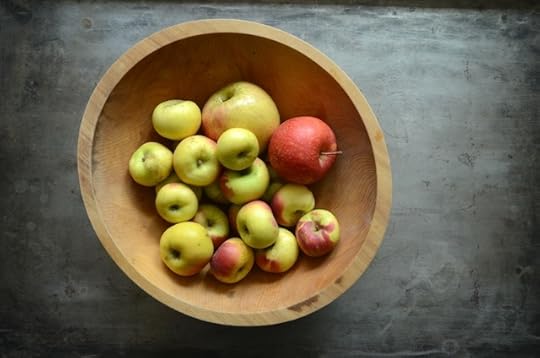
I bought these cute little lady apples back in January, thinking I would make a clever pickle or a preserve them in a cinnamon-spiked syrup. I tucked them into my produce drawer and the days went by.
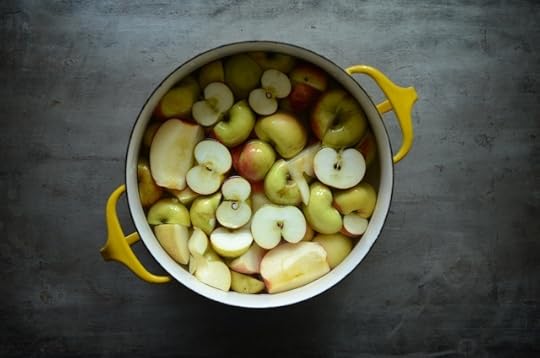
As I started thinking about this month’s challenge, those apples leapt to mind and I knew that their destiny lay elsewhere. Along with a couple other apples, they were meant to become jelly. Apple ginger jelly, to be precise.
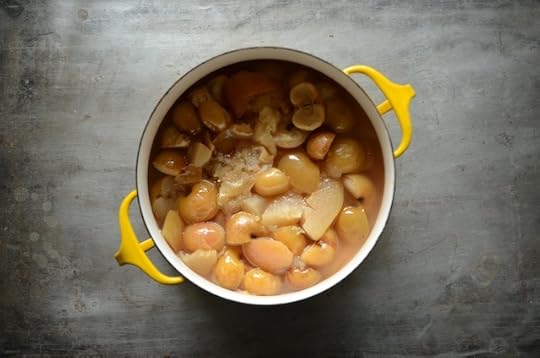
I love using apples to make jelly because while they make a respectable preserve all on their own, they have a neutral enough flavor that they can take on a wide array of other flavors as well. I combined my apples with fresh ginger, but you could go with a fresh herb or a trio of warm winter spices.
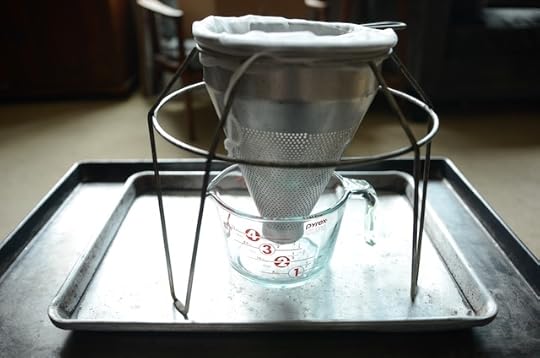
The process of making jelly from apples is easy enough. Cut them into halves or quarters. Cover them with water (start with about a cup more water than you need for your finished recipe). Add your flavor enhancers if you’re using something that appreciates a longer infusion. And simmer until the fruit is very soft.
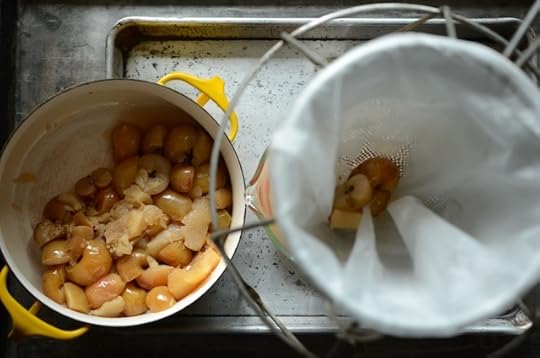
Once the fruit is soft, it’s time to strain. I line old china cap and stand that I inherited from my great-aunt Flora with a nut milk bag (sturdier than a jelly bag), but you can also use a traditional jelly bag stand, or even a colander lined with cheesecloth that you perch on top of a tall bowl.

Best practice is to give your fruit at least 6-8 hours to drain so that you don’t introduce any pulp into the juice that could make your jelly cloudy. However, if you don’t really care about having a batch of a slightly opaque jelly, go ahead and squeeze. I got an additional half cup of juice from my fruit thanks to some vigorous squeezing.
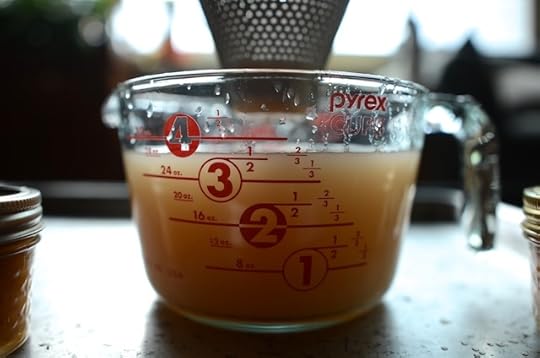
Once you’ve got all the juice extracted from your apples, it’s time to make the jelly. Bring the juice to a boil. As it heats, whisk the sugar and pectin together. Once the juice boils, whisk in the the pectin-spiked sugar and stir. Add some fresh lemon juice for balance. And start checking for set.
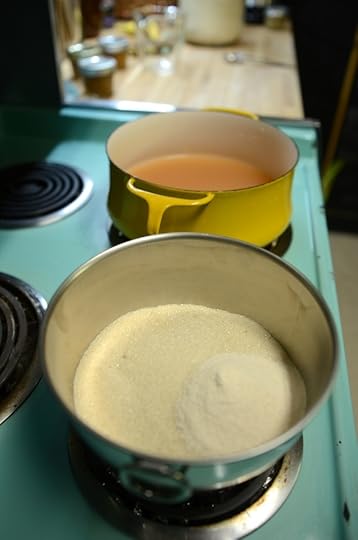
Once you get some nice, thick sheeting on the back of your spoon or the jelly passes the plate test, it is done. Pour it into jars, leaving 1/4 inch of headspace (the thinner the product, the less headspace you need).
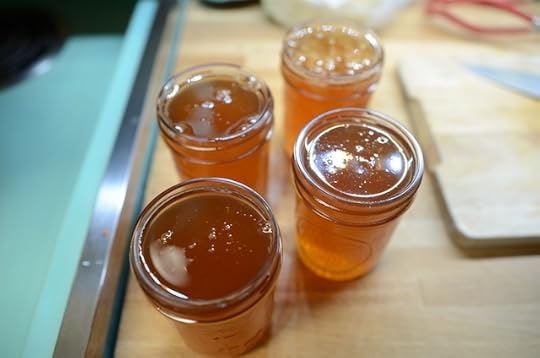
The finished flavor of this jelly is bright from the apples and just a little bit spicy from the ginger. I ate the last couple teaspoons that wouldn’t fit into the jars on peanut butter toast and felt very much like all was right with the world. I could also see it tasting very good spread thinly inside a grilled cheese sandwich.
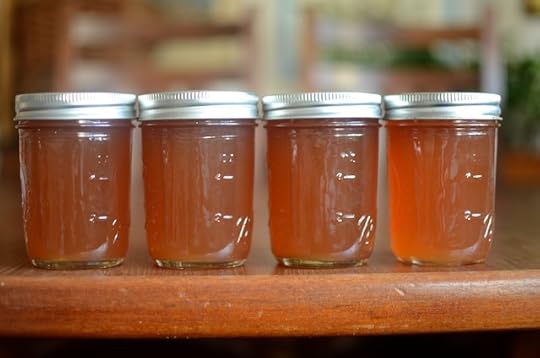
For those of you who made jelly for this month’s challenge, how has it gone for you? Any favorites to share?
PrintApple Ginger Jelly
Yield: 4 half pints
Ingredients
2 pounds apples, roughly chopped3 ounces fresh ginger, chopped
5 cups water
3 cups granulated sugar
2 tablespoon powdered pectin
1 lemon, juiced
Instructions
Combine the chopped apples and ginger in a pot with a tight-fitting lid. Add water, cover and bring to a boil. Once the pot boils, reduce the heat to medium and simmer for 40-45 minutes. Once apples are very soft, remove the pot from the heat and let the apples cool a little.Strain the juice from the pulp, until you have approximately 3 1/2 or 4 cups.
Prepare a boiling water bath canner and four half pint jars.
Pour the juice into non-reactive pot and bring to a boil. Whisk the pectin into the sugar and whisk into the boiling jelly. Add the lemon juice and stir.
Continue to boil until the jelly sheets thickly off your spoon and/or passes the plate test. This can take anywhere from 15 to 30 minutes.
Once the jelly shows signs that it will set, remove the pot from the stove.
Pour the jelly into the prepared jars, leaving 1/4 inch headspace.
Wipe the rims, apply the lids and rings, and process in a boiling water bath canner for 10 minutes.
When the time is up, remove the jars and set them on a folded kitchen towel to cool. When the jars have cooled enough that you can comfortably handle them, check the seals. Sealed jars can be stored at room temperature for up to a year. Any unsealed jars should be refrigerated and used promptly. 3.1http://foodinjars.com/2017/03/apple-ginger-jelly/
Related Posts:
Mastery Challenge: Sour Cherry Elderflower Jelly, Made Two Ways
Submit your March Mastery Challenge Projects Here!
Facebook Live Jelly Demo this Thursday



